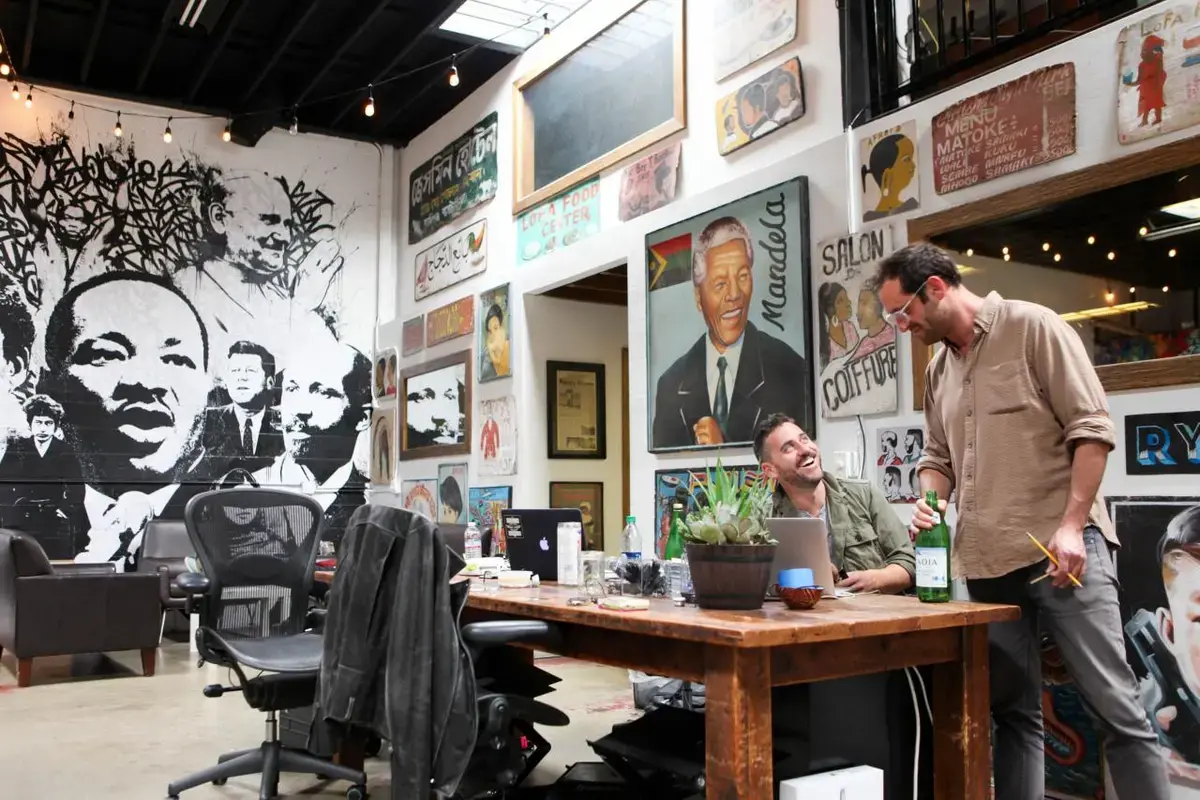The Future of News (and viewer response)
By Kara Bloomgarden-Smoke '07

For Bryn Mooser ’01, virtual reality is more than just headsets, immersive videos, and technological innovation. It’s more than the next big thing that is hitting news platforms. It’s more than the ground floor of a media empire. It is a global gamechanger.
Mooser is the co-founder and CEO of RYOT—a virtual reality media company that became part of Huffington Post in a multimillion dollar AOL/Verizon acquisition last year, making it the world’s largest 360 degree VR news network. As far as he sees it, VR will not only change the way stories are told, but change the way we respond to them.
Because virtual reality allows people to step inside the story and guide their gaze anywhere in space, the medium has a tendency to lean into emotional response. In fact, during a talk he gave at Bennington in September, he shared that some MRI studies suggest that our brain may actually register VR episodes in the memory cortex.
“Now you can interact with the story, move around the story, and fully immerse in a story,” Mooser explains. “That means we can stop telling people stories, now we can invite people to tell their own stories and experience other people’s stories. We can put people in entirely different worlds.” And now with this surging investment in his company, he plans to put people in many different worlds. Presently the company is making three VR stories a week, but soon, he told CNBC reports, “we expect to be making three VR stories a day.”
RYOT’s tagline is appropriately “become the story.” Before last year, RYOT did not have a tagline, it had a mission: “link every news story to an action.” It’s a mission he traces back to his formative years.
When Mooser was 16 he accompanied his mother to Zimbabwe, where she had been awarded a Fulbright to teach and study. After that experience he enrolled at Bennington, where he focused on anthropology and filmmaking, and then returned to Africa as a Peace Corps volunteer. That capstone experience had a lasting effect. “When I came home, I felt a mission to try to make the world a better place.”
Following the devastating 2010 earthquake in Haiti, he moved to Port au Prince and lived there for three years while working with an organization led by filmmaker Paul Haggis called Artists for Peace and Justice. His work was to rebuild schools and communities, which earned him and a colleague a Humanitarian of the Year recognition from Esquire magazine in 2012. It was in Haiti that Mooser started to make documentary films using basic digital cameras. Those documentary films, which helped raise awareness for the relief mission and get attention on the festival circuit, inspired Mooser and David Darg to launch RYOT.
In just four years, RYOT has worked with a range of media companies, most notably the New York Times and Associated Press, to produce an impressive body of virtual reality and augmented reality films.
Earlier this year, they received their first Academy Award Nomination for one of RYOT’s linear films, Body Team 12, a short documentary about the Red Cross workers in Liberia during the Ebola crisis. Produced by Mooser and directed by Darg, it tells an intimate story about a community dealing with a large-scale health crisis with global implications.
“As anyone who’s ever experienced VR on a headset or 360 video on your phone knows, the possibilities are powerful. And RYOT brings all the tech know-how that makes these experiences possible,” Huffington Post founder and editor-in-chief Arianna Huffington wrote in an April announcement. “But the real reason we’re joining forces is that RYOT isn’t just about the latest cool, shiny tech toys—they’re committed to using cutting-edge technology for a larger purpose.”
Mooser is enthusiastic about being part of a news platform that puts citizen journalism in focus and is strategic in its pursuit to give voice to as many people as possible.
In November, RYOT will premiere a 10-part Virtual Reality news show—the first of its kind. Each episode will explore topics of international importance.
“It’s the first time people will be able to step inside the news,” he says. “I want viewers to feel like they are standing on the streets of Southern Haiti in the aftermath of Hurricane Matthew. I want them to bear witness to the destruction and scale of the devastation.”
But the doc won’t just jerk tears, it will amplify the many ways viewers can take action and get involved.
In the frenzy of press coverage heralding RYOT as the next frontier in media making, they may have perhaps missed the deeper story in all of this: Mooser has managed to combine the spirit of the Peace Corps with the most cutting-edge developments in filmmaking.
“The overarching message of the Peace Corps is to send young Americans overseas and bring them back storytellers,” Mooser explains. “When President John F. Kennedy conceived of the program in 1961, he saw one of its three central tenets as a way for volunteers to bring the stories they learn during their time abroad back with them.” And, he says, “We’re just getting started.”